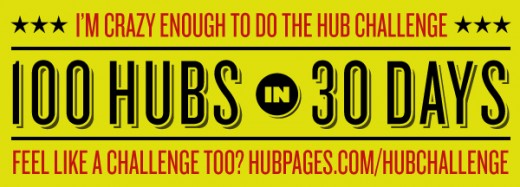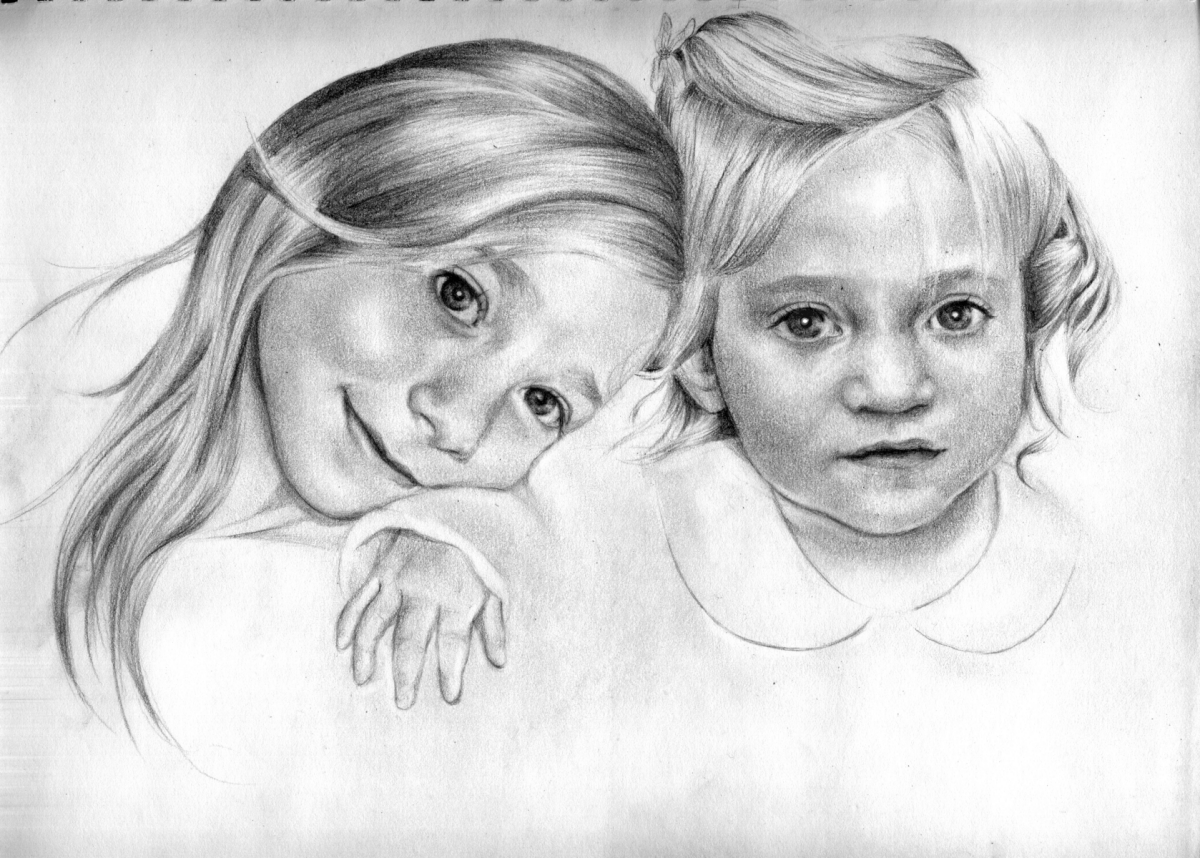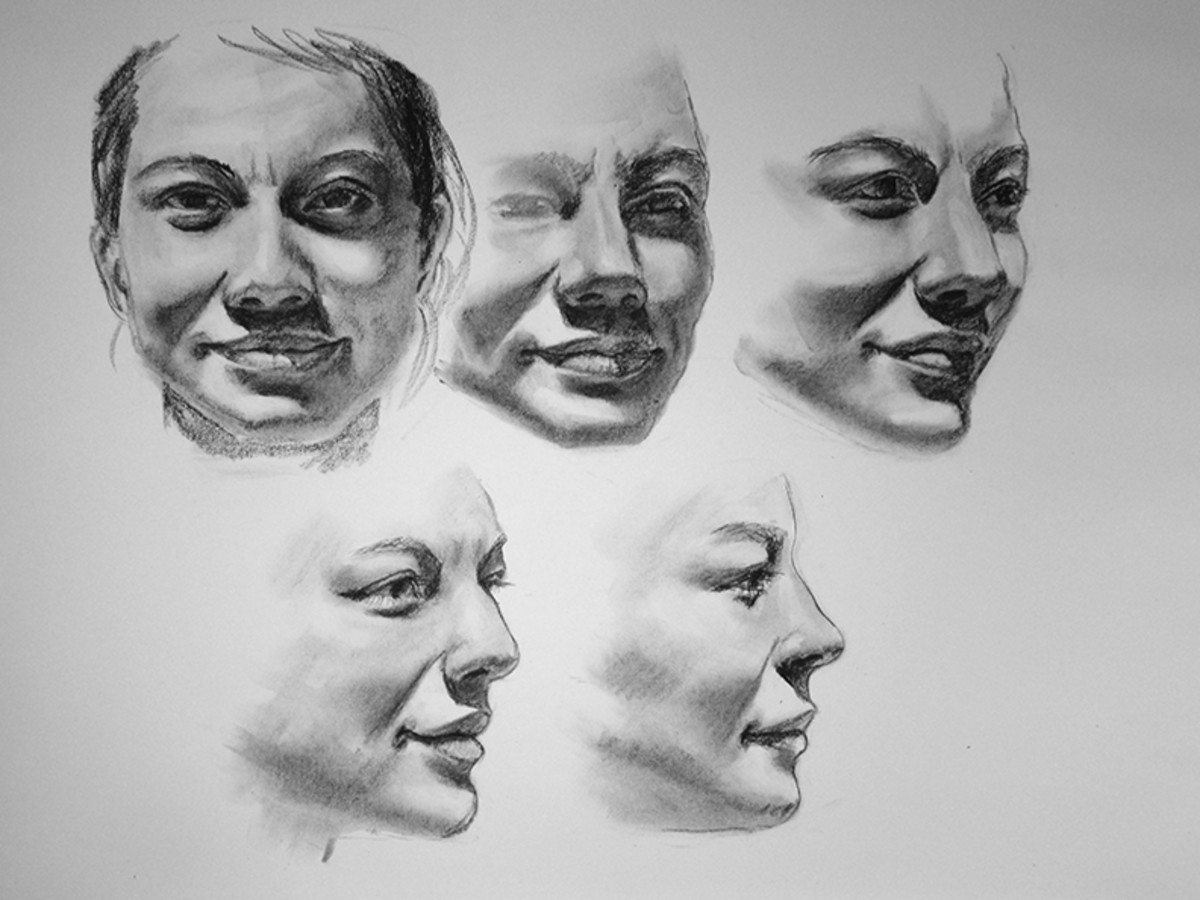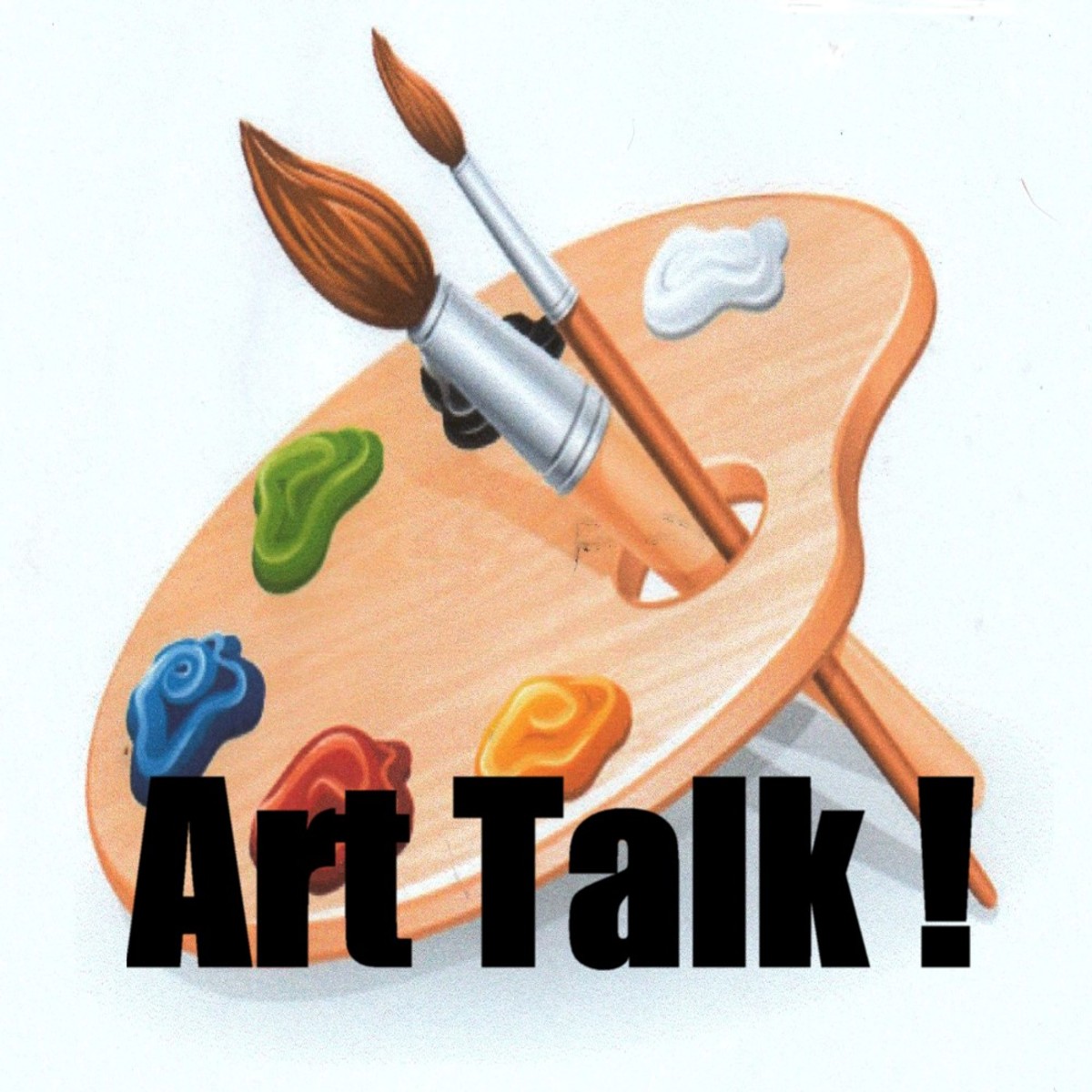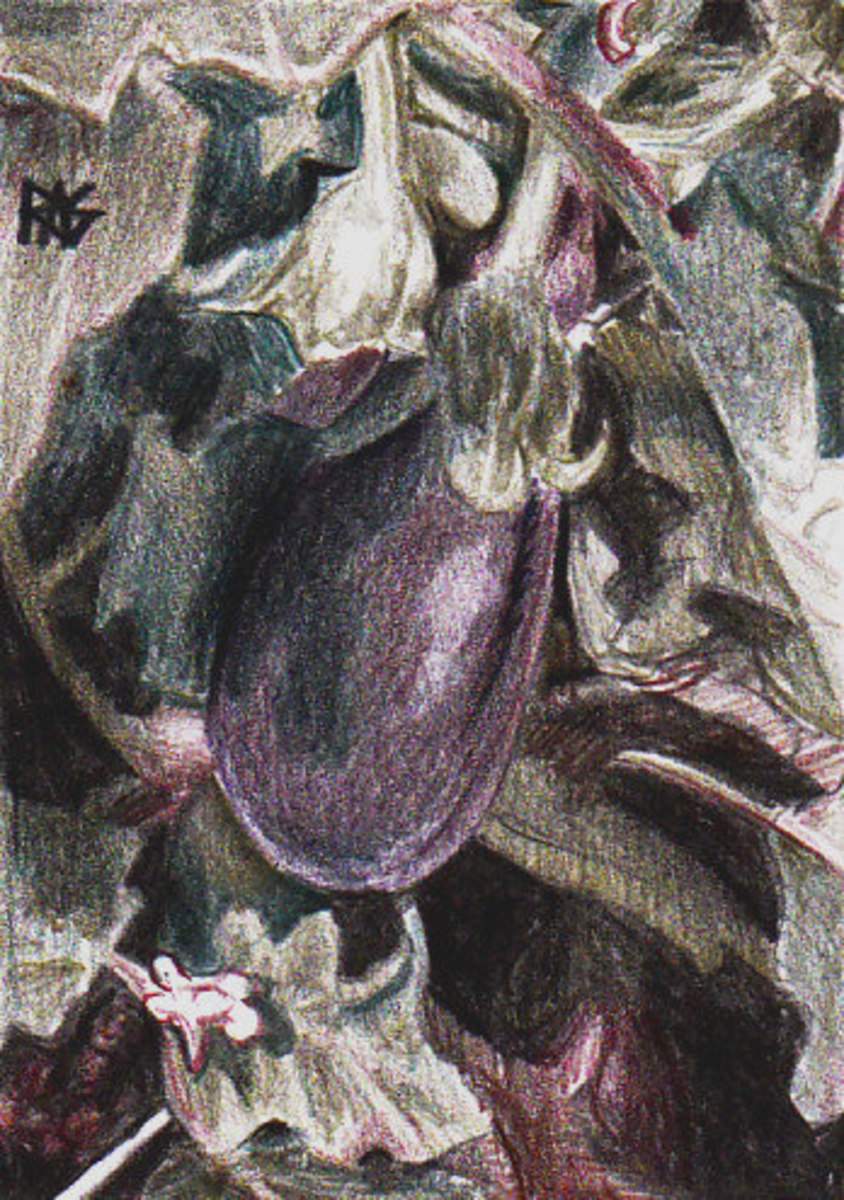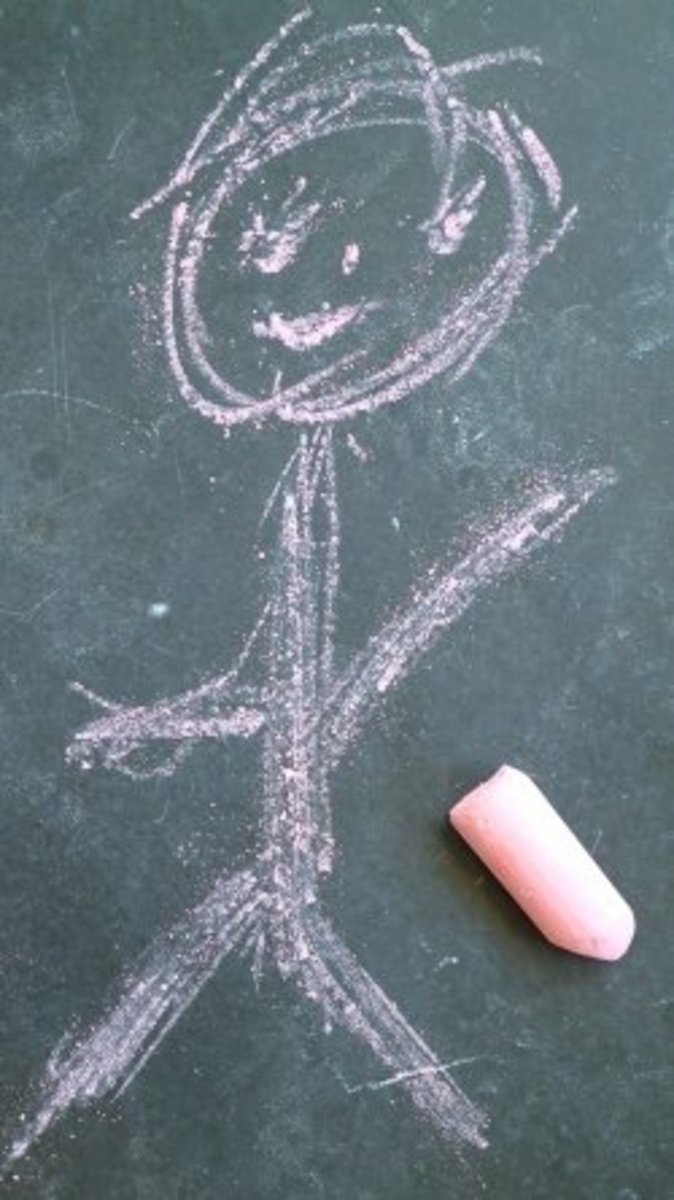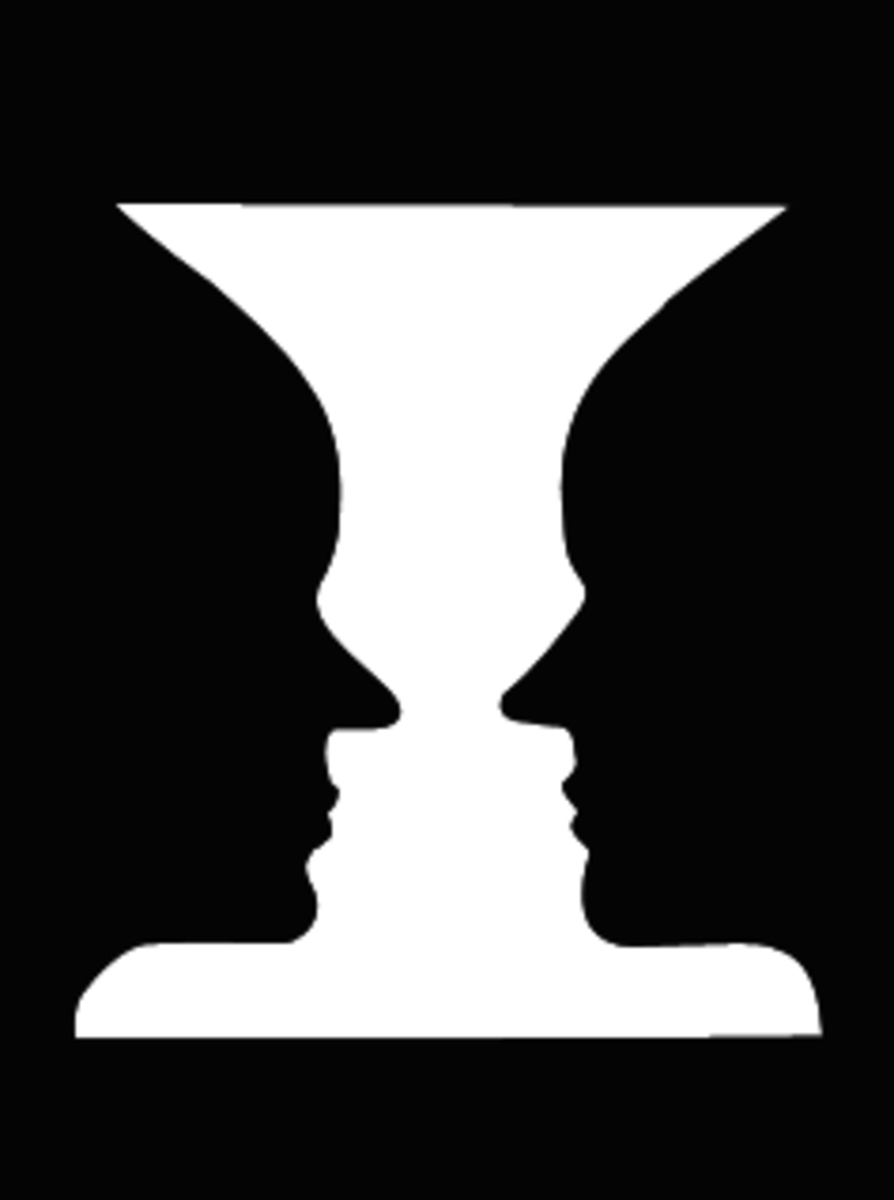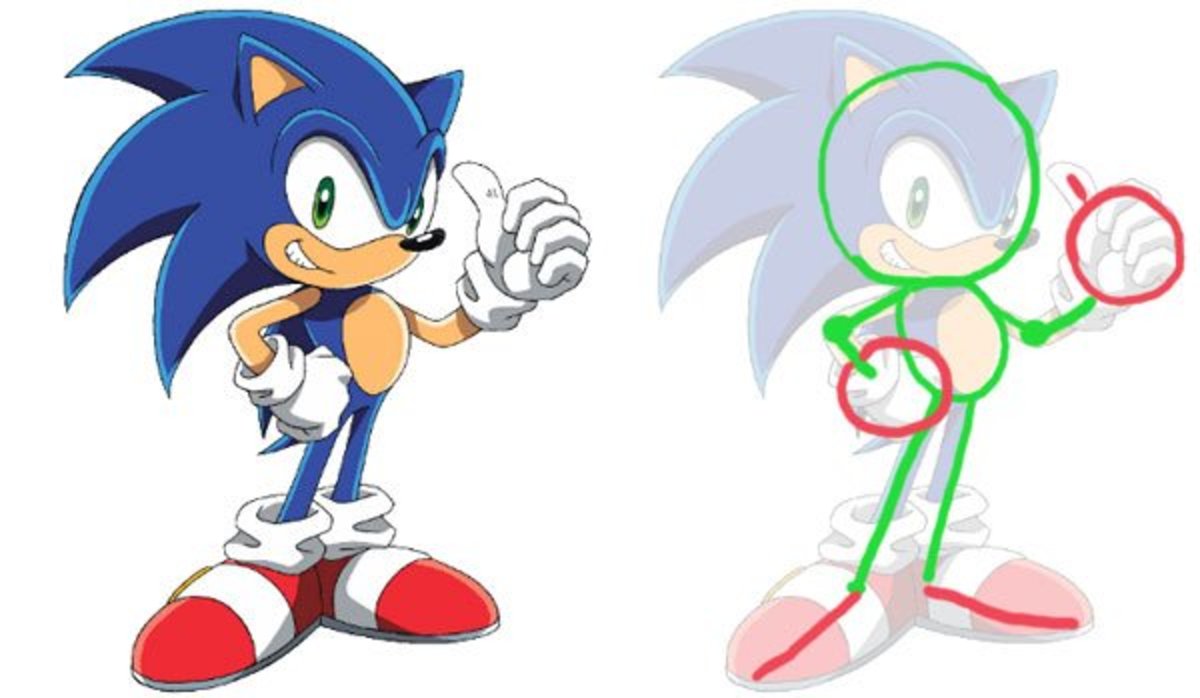Sketching Light in Derwent Tinted Charcoal Pencils
Light in the Forest
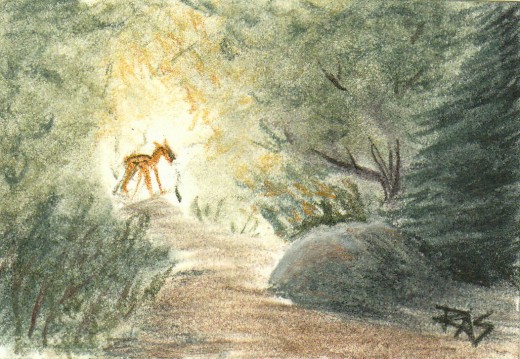
I Finally Found It! My best Tinted Charcoal Pencils drawing!
I was looking for this ACEO that I drew in 2008 to post in my article on Derwent Tinted Charcoals and finally found it when I was looking for either of my Hummingbird drawings in Derwent Coloursoft for that Hub. C'est la vie.
"La vee" my daughter will usually answer.
Why I wanted to use it as an example is obvious. This one got a good composition and the light spills out of the little drawing so powerful, silhouetting that spotted fawn, that it would've made a great example of what Derwent Tinted Charcoal Pencils can do. So let's go back to them in depth and see what went into making this tiny drawing work so well. There was plenty I didn't mention in the first article that also applies if you're using colored pencils, regular charcoal, regular charcoal pencils or pastel pencils on an ACEO sized background.
First, respect your work.
I know that the surface I used was either good white cold press watercolor paper or 100% rag Stonehenge drawing paper, which is quite heavy and very suitable for ACEOs. While the ACEO market will cheerfully buy a good artwork done on nonarchival cardstock, your collectors may notice it yellowing over a few years. Be sure to use acid free drawing surfaces as a minimum, at least the sort of acid free heavy paper you get in good drawing pads. Sketch pads have good acid free paper too but it's lots thinner.
Considering you should be putting it into a penny sleeve and top loader, your "card" can be as thin as Sketch Paper without creating a problem, but don't do things that would cockle or buckle on thin paper. I prefer sturdy card at least 80lb heavy, like good drawing pads. Stonehenge is 90lb like Canson Mi-Tientes and very sturdy stuff.
It goes way beyond the quality of vellum or smooth Bristol and it has a surface that's very soft and toothy -- it will grab color from charcoal or pencils or colored pencils yet have a fine tooth that allows very small details. If you want very thin lines or small dots with a charcoal stick or pencil, use sandpaper or a razorblade or art knife (basically a razorblade with handle, I like the ones that have about 100 snap-off blades and are super sharp) to shave off the point to a fine point rather than using a sharpener.
Charcoal or pastel pencils will crumble fast in a sharpener, they're worse than Prismacolors. So either wear it down to a chisel edge or fine point on sandpaper or by scribbling on coarse paper till it's to shape, or shave it off with a blade till its point is ready for doing details. On larger pieces, you can combine wearing it down to a fine point by filling in big dark areas and holding the point on an angle while turning it every now and then. This will give a beautiful point or chisel edge with no wastage.
But let's get back to topic.
Derwent Tinted Charcoal Pencils -- The Product
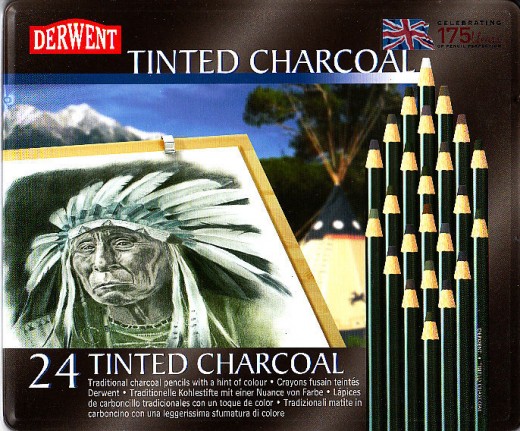
Draw the Darks First -- Reserve The Light Areas!
The way I use Derwent Tinted Charcoal Pencils is not far from the way I handle graphite or any drawing medium. I learned to do this painting watercolors and it's a pleasure when I use dry mediums too.
Reserve your white areas by not drawing on them.
Sketch whatever you're going to do lightly at first with the very darkest colors, and the right color more or less for the area you're doing. For this fawn in the forest, I started with the shading in the foliage. I had a good photo reference from the Reference Image Library at http://wtww.wetcanvas.com and I proceeded to change it so much that it's not recognizable. I have a pastel painting also based on it in progress on my wall.
Basically I got the trees out of one and the path and dirt and rocks out of others. This is a good way to avoid busting someone's copyright -- if you borrow a background rock from something in a magazine photo and it is not a main element of your drawing or of the photo reference, then you're not breaking copyright. Do not do it to the same size, in the same colors, in the same way and especially not in the same composition as the original photo reference. Crop and flip and move it and change its colors.
A rock's a rock. Ideally the photographer should be able to look at your drawing and not recognize that rock as coming out of their photo.
Another really good way to get boulders into a drawing is to collect some small broken pebbles, some rounded and smooth from rivers, others broken and jagged edged. Set them on your table and move the table lamp till it's at the angle the sun is in your forest reference. Presto. You now have great big boulders as long as you draw them to scale. A rock is a rock.
If you want it half sunk in mud, then fill a tray with salt or sugar and bury your pebble part of the way into it. Or a bowl of sand, if you want true color to sandy dirt. Or the pot of a potted plant. Dirt is also something that doesn't need scale and can be drawn to fit the landscape you're doing. The only problem with using terrariums for the whole scene is that your miniature plants in the terrarium may look like it's a miniature by their species -- moss isn't grass unless you draw it very loosely. Bonsai trees have needles out of proportion to their height -- though if you look at both a bonsai and a photo reference, you can correct that in the painting.
The part I took from the reference was the foliage immediately around the lighted area. There's a creek coming through in the original photo reference that has nice boulders in it but none as large as the borrowed rock -- which I think was one of those pebble on my desk ones. The clump of weeds was definitely from a different reference.
The fawn was from memory. Because I was working so tiny, in real life the fawn was only 3/8" tall, I had some head proportion problems with thickness of the muzzle. I don't think they really destroy it though. Remember that things very strongly backlit may have light altering their outlines and especially narrowing them or breaking thin lines. If I'd done it even smaller I might have skipped part of his legs because the light would obscure them.
I did use the white charcoal to put some spots on his body.
One of the best ways to use a photo reference is to blur your eyes when you look at it. Or save it off on your computer and look at it as a very tiny thumbnail, where you see blurred dark, light and medium areas. This is great for developing a composition.
I usually open it up in http://www.gimp.org (download link for The Gimp, a freeware photo manipulation and digital art program I love that is the reason I never bought Photoshop) and then adjust the size of the window it's in till the reference is in a window too small for it. I get it to the proportions of the ACEO and enlarge the view so I'm only seeing part of it, then use the slide bars to roll around on the picture till I find the best crop to make my own art. This is an easy way to crop digital photo references for immediate use.
If you want to mark the crop for later use, do a Save As on the photo reference and set the Brush to a narrow line, then outline just inside the viewing window with straight lines and black or white or red, whatever shows up best on what's in the photo. Then save that version as Cropped or of course, use rectangular select and just crop that area so the cropped version is saved off without the rest. Either way you can then print it out to see truer color than your monitor shows.
You can also free select, Copy and then Paste elements from another photo right into the saved-as photo reference several times to get a clumsy collage-looking version of a photo reference that shows everything. Many artists do this either with glue and scissors or Photoshop.
I tend not to bother since I like just having the references open and doing it in my head and with my sketch. I know what size I want the rock so I don't need to snap a photo and paste it into my reference to see it in place. Just never got in the habit. But it's very useful if you aren't in the habit of visualizing combined photos.
You can also grab a black brush pen, a gray brush pen and a bit of scrap paper and draw a Notan -- a quick value sketch just massing all the darks as black and all the mid tones as gray, leaving the white blank. Two shades of gray gives a four-tone Notan value sketch. This is very good for trying different compositions and can help balance something by the Rule of Thirds, Golden Mean or any other proportion guide you want.
The more changes you make from the photo reference, the better when respecting copyright anyway. So feel free to try different combinations and changes. Repeat an element several times if there's a pretty evergreen or something you want to put in. I'm pretty sure the evergreen came from yet another photo reference. I think I had to flip it to get the light coming from where it obviously comes from behind the fawn.
Always remember the direction of the light.
A trick for that is to tape your card or paper to a drawing board or leave a margin around it and draw an arrow in the direction of the light on the margin. Then when you add new elements you can be sure it's above and to the left, or radiating from around the fawn, or whatever it's doing.
Get the shadows right and every bit of not-drawn white space turns into blazing light in a beautiful way. On something like this, shade bluer greens the farther into darkness and yellower ones the closest to the bright sunlight. I have the warmest colors and strongest contrast on the fawn himself -- he's warm golden browns and quite dark against the white light behind him from what must be a more open meadow or lakeside or something.
Both of those things create a focal point, but contrasts especially do and he's sitting a third of the way over from the left, which helps keep the composition balanced. The heavy dark rock at lower right helps to balance him and contrasts texture and color, being grim and blue-gray dark instead of light and warm and spindly.
If you think of the natural things in your landscape as elements of an abstract and do thumbnails of them just as shapes and colors, you can create underlying harmonies like that to draw attention where you want it. By subject a sweet and tender young baby animal is more interesting to humans than a bunch of trees, light is more attractive than dark and living things more than rocks. So everything points to the baby fawn.
Not everyone is sentimental, but baby fawn probably tastes about as good as lamb or veal so that may appeal to the predatory instincts of blokes who aren't into cute baby animals as cuddly babies. Either as prey or pet, the little animal is intriguing on some level. I don't know if it's legal to shoot spotted fawns but it's probably a kindness if you shot its mom before it's weaned, better than letting it starve.
This is one of my better drawings in general, so I hope these thoughts on why it worked help you when planning and designing your own art. Derwent Tinted Charcoals go very fast and are as dramatic as regular black charcoal, but they also let you use color to help create depth and interest too. The muted nature colors give a good feeling of a real wilderness and keep it from looking too much like a Disney cartoon or something on a Saturday morning that advertises My Little Pony, so they're very good for nature artists unless you like doing flowers -- and if so, you can always combine them with any brand of pastel pencils for similar texture and working qualities.
Enjoy! The more often you draw, the better you get at it. Even though it's only been a few months, even though this is one of my best, I know I will create better the next time I start fooling around with Derwent Tinted Charcoal pencils and put that much thought into planning a drawing. I might work larger too, the detail I could get in 5" x 7" would be impressive looking at this as just a little ATC card.
#34 of 100
